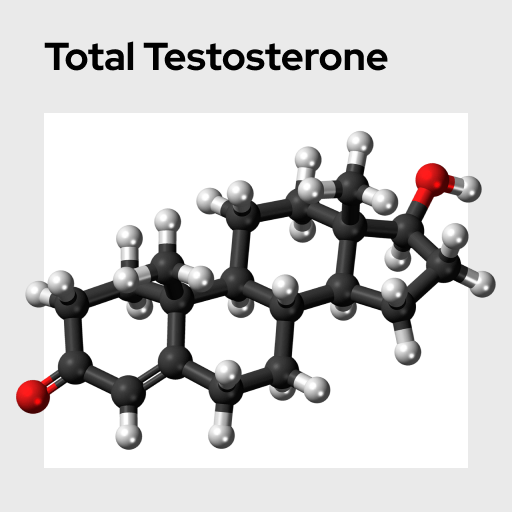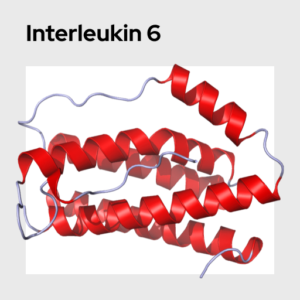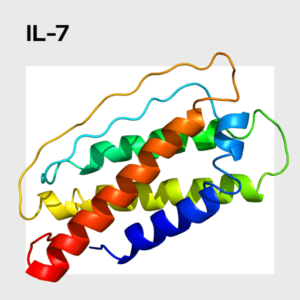Testosterone (Total)
Testosterone is the primary male sex hormone. It also plays an important role in motivating competitive and sexual behaviors in both men and women, and it increases in response to sexual stimuli and competitive victories. Total T measures total levels of testosterone, whereas free T captures only unbound, biologically active levels of T. Either total T or free T can be measured in serum and plasma, but only free T can be measured in saliva. While testosterone is generally considered immunosuppressive, research finds that it has complex effects on different types of immune function.
Name: Testosterone (Total)
Category: Sexual Arousal / Men’s Sexual Health
Type of Test: Blood
Testosterone (T, 17β-Hydroxyandrost-4-en-3-one), often referred to as the primary male sex hormone, is an essential androgenic and anabolic steroid. Like all steroids, testosterone is derived from cholesterol. Testosterone is primarily produced in the gonads, but it is also produced in small amounts in the adrenal glands. The release of testosterone is regulated via a negative feedback loop controlled by the hypothalamic-pituitary-gonadal axis (HPG). As an androgen, testosterone is responsible for the development and maturation of male sex characteristics. Testosterone also exerts anabolic effects in both men and women, such as increasing bone mineral and muscle density. Testosterone is aromatized into the primary female sex hormone, estradiol (estrogen) and metabolized into the highly androgenic dihydrotestosterone (DHT) via 5-alpha reductase. Accordingly, testosterone is crucial to the reproductive health of both men and women. Testosterone also exhibits circadian rhythmicity, with levels being highest in the morning and lowest around midnight.
The release of testosterone is age-dependent. In men, levels remain relatively low until puberty, at which point they increase dramatically and remain high until 30-35. After age 35, levels of this hormone tend to decrease. Moreover, men’s testosterone levels have also been found to decrease in response to long-term pair bonding and parenthood. Furthermore, testosterone also regulates sexual preferences, levels of aggression, competitiveness, mating effort, sexual function, and many more vital activities. In women, abnormal testosterone levels are associated with mood disturbances, changes in libido, cystic acne, and polycystic ovarian disease. In men, suboptimal levels of testosterone are associated with erectile dysfunction, libido changes, decreased sperm count and decreased muscle and bone density.
Testosterone is found in the body in two forms: free and protein-bound (to sex hormone binding globulins and albumin). Most of the testosterone present in the blood (which contains both bound and unbound testosterone) is protein-bound. On the other hand, most of the testosterone that enters saliva is free, making saliva a useful sample type for assessing biologically active levels of this hormone. Nonetheless, serum / plasma and salivary levels of testosterone tend exhibit high positive correlations.
Hines M. (2008). Early androgen influences on human neural and behavioural development. Early Human Development, 84, 805–807. https://doi.org/10.1016/j.earlhumdev.2008.09.006
Bernhardt, P. C. (1997). Influences of serotonin and testosterone in aggression and dominance: Convergence with social psychology. Current Directions in Psychological Science, 6, 44-48.
Han, C., Zhang, Y., Lei, X., Li, X., Morrison, E. R., & Wu, Y. (2020). Single dose testosterone administration increases men’s facial femininity preference in a Chinese population. Psychoneuroendocrinology, 115, 104630. https://doi.org/10.1016/j.psyneuen.2020.104630
Kanakis, G. A., Tsametis, C. P., & Goulis, D. G. (2019). Measuring testosterone in women and men. Maturitas, 125, 41–44. https://doi.org/10.1016/j.maturitas.2019.04.203
Keevil, B. G., & Adaway, J. (2019). Assessment of free testosterone concentration. The Journal of Steroid Biochemistry and Molecular Biology, 190, 207–211. https://doi.org/10.1016/j.jsbmb.2019.04.008






